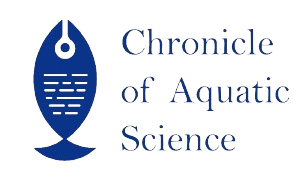| File | Action |
|---|---|
| CoAS_V1IS5_10 | Download |
- 919088951040 call us
- chronicleofaquaticscience@gmail.com Mail us
CoAS_V1IS5_10
Popular Article
Automation Technology and Robotics in Fisheries and Aquaculture Sector
Priyanka Verma, Devarshi Ranjan*, Ashish Sahu, Durgesh Kumar Verma, Harshita Singh
Abstract
The world's biggest facing problem is the increase in population and the difficulty of feeding them healthy food. Globally, agriculture, fisheries, and aquaculture play a vital role in producing food for human consumption on land and in the ocean. Over the past decades, the aquaculture industry has been the fastestgrowing food-producing sector in the world, but currently, the sector is facing many problems due to improper management, traditional techniques, and expensive labor. Therefore, the industry and rich farmers have adopted the use of automation and robotic technology in a variety of tasks to address current and future challenges in aquaculture with the overall goal of improving efficiency, reducing risks and costs, as well as increasing production and sustainability. Increasing automation in high-risk processes of aquaculture will have positive social and ethical impacts in addition to economic ones. This article discusses the use of automation and robotic techniques in the fisheries and aquaculture sector by reviewing the problems, processes, and applications in this field. From the review and analysis of the current situation and issues it is clear that automation in the aquaculture and fisheries sector will take it forward in the future with lower costs and more profits.
Keywords
Automation, robotics, fisheries, aquaculture, future challenges
References
Andrewartha, S. J., Elliott, N. G., McCulloch, J. W. & Frappell, P. B. (2015). Aquaculture sentinels: smart-farming with biosensor equipped stock. Journal of Aquaculture Research and Development, 7, 1-4.
Chrispin et al., 2020. Application of Artificial Intelligence in Fisheries and Aquaculture. Research Today 2(6): 499- 502
Clavelle, T., Lester, S.E., Gentry, R. and Froehlich, H.E., 2019. Interactions and management for the future of marine aquaculture and capture fisheries. Fish and Fisheries, 20(2), pp.368-388.
Daoliang, Li. (2018). Unmanned Fish Farming-the 4th Generation of Aquaculture (powerpoint presentation). Available at https://www.itu.int/en/ITU D/RegionalPresence/AsiaPacific/SiteA ssets/Pages/Eagriculture-Solutions Forum2018/unnmaned%20fish%20far ming.pdf
Merino, G., Barange, M., Blanchard, J. L., Harle, J., Holmes, R., Allen, I., … Rodwell, L. D. (2012). Can marine fisheries and aquaculture meet fish demand from a growing human population in a changing climate? Global Environmental Change, 22(4), 795–806.
Mustapha, U. F., Alhassan, A. W., Jiang, D. N. & Li, G. L. (2021). Sustainable aquaculture development: a review on the roles of cloud computing, internet of things and artificial intelligence (CIA). Reviews in Aquaculture, 13(4), 2076-2091.
Ogurtsov, V.I., Twomey, K. and Herzog, G., 2014. Development of an integrated electrochemical sensing system to monitor port water quality using autonomous robotic fish, pp- 317- 351. doi:10.1016/b978-0-08-096532- 1.01312-1.
Robot turtle can monitor fish without stressing them. Retrieved from https://electronics360.globalspec.com/ article/14925/robot-turtle-can-monitorfish-without-stressing-them on 08/10/2023
Robotic Fish Cages. Retrieved from https://thefutureofthings.com/6281- robotic-fish-cages/ on 08/10/2023.
Teja, K. B. R., Monika, M., Chandravathi, C. & Kodali, P. (2020). Smart monitoring system for pond management and automation in aquaculture. In 2020 International Conference on Communication and Signal Processing (ICCSP). 204-208.
The Use of Drones in Aquaculture and Fisheries Management. Retrieved from https://ts2.space/en/the-use-of-dronesin-aquaculture-and-fisheriesmanagement/ on 10/08/2023.
- Published online
- 30th October, 2023
How to Cite the Article
Verma, P., Ranjan, D., Sahu, A., Verma, D. K. and Singh, H. 2023. Automation Technology and Robotics in Fisheries and Aquaculture Sector. Chronicle of Aquatic Science 1(5): 99-104.
Copyright
This is an open-access article distributed under the terms of the Creative Commons Attribution License (CC BY). The use, distribution or reproduction in other forums is permitted, provided the original author(s) and the copyright owner(s) are credited and that the original publication in this journal is cited, in accordance with accepted academic practice. No use, distribution or reproduction is permitted which does not comply with these terms.

CoAS_V1IS5_10


